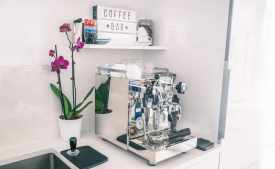The Psychology of Workspace Design: Making Your Home Office Work for You

Creating a home office that promotes both comfort and productivity is more than just choosing stylish furniture; it involves understanding how your environment influences your mental and physical well-being. The psychology behind workspace design can significantly impact how effectively you work from home, helping you stay motivated, focused, and comfortable throughout the day.
Understanding the Psychological Impact of Your Workspace
Your workspace environment plays a crucial role in shaping your mood and productivity levels. Factors such as lighting, color schemes, organization, and personalization can either enhance or hinder your ability to focus. For instance, natural light has been shown to boost mood and energy, while clutter can increase stress and reduce efficiency. Designing a workspace with psychological principles in mind helps create an atmosphere that supports sustained concentration and creativity.
Choosing Comfortable Furniture That Supports Health
Ergonomic furniture is vital for comfort and long-term health while working from home. An adjustable chair with lumbar support reduces back strain, while desks at the right height prevent neck and shoulder pain. Investing in ergonomic accessories like keyboard rests or monitor stands can also minimize repetitive strain injuries. Comfort leads to fewer distractions caused by discomfort or pain, allowing you to maintain focus throughout your workday.
Optimizing Lighting for Productivity
Lighting significantly affects alertness and eye strain. Ideally, position your desk near windows to take advantage of natural light during the day. Use adjustable task lighting to complement ambient light without creating glare on screens or surfaces. Soft white bulbs mimic daylight tones that help keep you alert without causing harsh shadows or fatigue.
Incorporating Organization for Mental Clarity
A clutter-free space fosters a clearer mind by reducing distractions and making it easier to find necessary tools or documents quickly. Utilize storage solutions such as shelves, filing cabinets, or desk organizers to keep items neatly arranged but accessible. Regularly decluttering your workspace ensures it remains inviting rather than overwhelming.
Personalizing Your Space for Motivation
Adding personal touches like artwork, plants, or meaningful objects can boost motivation by making the space feel uniquely yours. Plants not only add aesthetic appeal but also improve air quality which contributes positively to cognitive function. Motivational quotes or favorite photos can inspire enthusiasm during challenging tasks.
Designing your home office with psychological insights ensures it’s not just functional but also a place where you feel comfortable and inspired every day. By focusing on ergonomics, lighting, organization, and personalization tailored to support both comfort and productivity, you’ll create an environment that truly works for you.
This text was generated using a large language model, and select text has been reviewed and moderated for purposes such as readability.











